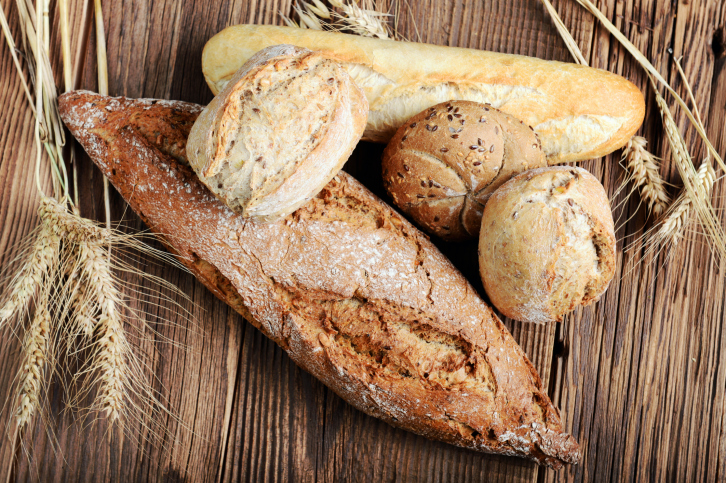Want to lower your risk for many chronic diseases? Look to whole grains for help. Studies show that eating whole grains can lower your risk of certain chronic diseases, such as coronary disease, Type 2 diabetes and colorectal cancer, just to name a few. And according to the Whole Grains Council, people who regularly eat whole grains often have a lower risk of obesity as well as lower cholesterol levels.
What are whole grains?
Popular forms of whole grains include:
- Amaranth
- Barley
- Buckwheat
- Corn, including whole cornmeal and popcorn
- Millet
- Oats, including oatmeal
- Quinoa
- Brown and wild rice
- Rye
- Sorghum
- Teff
- Wheat, including varieties such as spelt, bulgur and wheatberries
Low in fat and abundant in vitamins and minerals, grains are an essential part of a healthy diet; they contain good-for-you nutrients like B vitamins, Vitamin E, magnesium, iron and fiber. Whole grains are the most beneficial type of grain; according to the 2010 Dietary Guidelines for Americans, whole grains should make up at least half of the grains you eat.
How can you add more whole grains to your diet?
- Don’t be fooled by imitators. Breads labeled “nine-grain,” “multi-grain” or “wheat” are often little more than white bread in disguise. Make sure the ingredient list starts with whole grain, such as whole-wheat flour. Look for 100% whole grain breads that have at least 3 grams of fiber per serving; this often ensures the product is mostly, if not all, whole grain.
- Start the day with a hearty breakfast. Cook up a serving of oatmeal or other hot whole grain cereal. According to the American Dietetic Association, oatmeal can lower blood cholesterol and may help you maintain a healthy blood pressure. It is also a rich source of soluble fiber. And because soluble fiber can help to control blood sugar, oatmeal may also lower your chances of Type 2 diabetes. Be alert when buying instant oats–check the label for added sugar. If you want your oatmeal to taste a little sweeter, a healthier option is to buy the no-sugar-added variety and mix in some fruit or a drizzle of maple syrup.
- Experiment with something new. Why settle for white bread (which is not a good source of whole grains) when you can make sandwiches with hearty whole-grain wheat or rye? Try some other sources of whole grains that come in bread form, such as oat, spelt, millet or brown rice.
- Start a new partnership. Instead of white rice with your sushi, cook up some brown rice. Have some whole wheat or quinoa pasta with veggies and topped with your favorite marinara sauce.
- Make plenty. Cook more whole grains than you need for just one meal; pack the leftovers in the fridge so you have them handy and can easily incorporate them into many of your meals. For example, try spooning brown rice or barley into soups, serving quinoa as a side dish, incorporating grains like oats into your homemade healthy desserts…the possibilities are endless!
If you are interested in learning more about adding healthy whole grains to your meals, make an appointment to talk with your doctor to better understand your dietary needs and how whole grains can play a role in your diet. Or, call your Health Advocate Wellness Coach to get healthy meal and snack ideas that include whole grains. Or, if you’re not a Health Advocate member, you can consult the following online resources for help:
Health Advocate’s “Healthy Eats” Pinterest board – Our Pinterest board features a collection of recipes that include whole grains. Check out recipes for Apple Cinnamon Breakfast Quinoa, Peanut Butter Banana Oatmeal Muffins, and more. Visit http://pinterest.com/hlthadvocate/healthy-eats/
Eatright.org – This site is hosted by the Academy of Nutrition and Dietetics and discusses the benefits of whole grains and also enables you to find a registered dietician in your area. Go to www.eatright.org/Public/content.aspx?id=6442471695
http://allrecipes.com/howto/whole-grains/ – This site provides dozens of recipes on how to add whole grains in your meals.
http://www.choosemyplate.gov/food-groups/grains-tips.html – This site offers tips on how to help you incorporate more healthy grains into your diet.



